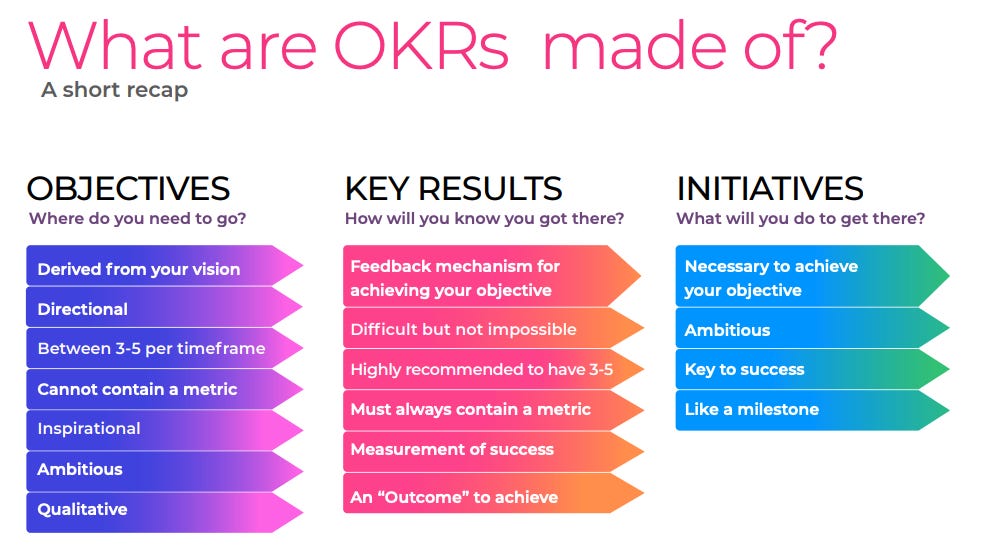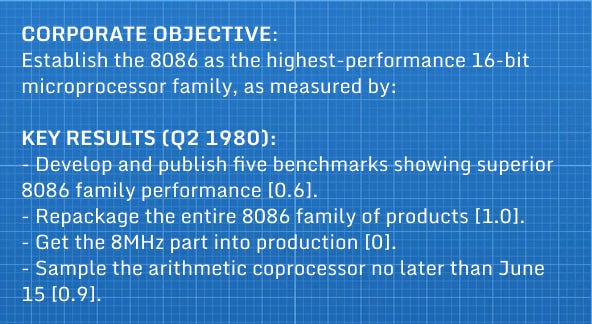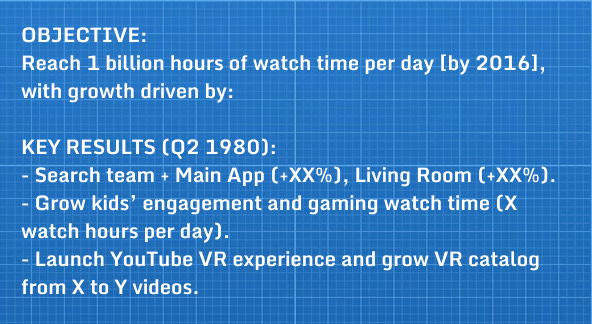Setting Goals That Actually Matter: The OKR Truth Tech Leaders Need to Hear
OKRs transformed Google but fail in most organizations. Why? Learn how to implement this powerful goal-setting framework correctly, avoid common pitfalls, and create objectives engineers won't dismiss
Hello, and welcome back to Tech Trendsetters! Today's episode tackles a framework that's become almost sacred in tech circles – OKR. OKRs (Objectives and Key Results) have transformed from a management technique into a full-blown religion. But is the devotion warranted?
We've all spent years watching companies implement OKRs with varying degrees of success. Some thrive. Others crash and burn. Today, I'll share what separates the winners from the losers.
We'll build our insights based on John Doerr's influential book "Measure What Matters" and extract its core lessons. More importantly, we'll confront the messy realities that the polished case studies often overlook.
This episode is neither debunking nor endorsing the concept of OKRs. They work – when done right. It's about cutting through the hype to find the practical truth that actually helps your team perform.
Let's begin.
The OKR Framework
The concept of OKRs isn't new. It's evolutionary, not revolutionary. To understand why it works when it works (and fails when it fails), we need to trace its lineage and mechanics.
Origins and Core Mechanics of OKRs
The OKR story begins not at Google but at Intel in the 1970s. Andy Grove, Intel's legendary CEO, adapted Peter Drucker's Management by Objectives (MBO) system by adding something crucial: measurable key results.
John Doerr, who worked under Grove at Intel, later introduced this system to Google when they were still a tiny startup. In his book "Measure What Matters," Doerr outlines four "superpowers" that OKRs supposedly unlock:
Focus and Commitment;
Alignment and Transparency;
Tracking;
Stretching for Amazing Results;
The mechanics are straightforward: define inspiring objectives (the "what") and pair them with specific, measurable key results (the "how we'll know we're getting there"). Keep them few, make them meaningful, and review them frequently.
What made OKRs work at Google was their dual-track approach:
"Committed OKRs" must hit 1.0 or they're considered failures
"Aspirational OKRs" aim for 10x growth, and achieving even 0.7 is celebrated
This distinction is critical. Without it, your OKR system becomes either toothless or demoralizing.
OKRs That Drove Transformational Results
The book provides fascinating examples of OKRs driving transformative results. Let me highlight three that demonstrate their potential.
Intel's Operation Crush. This might be the most dramatic OKR success story. In 1979, Intel faced a serious threat from Motorola's technically superior 68000 chip, which outperformed Intel's 8086. Rather than accepting defeat, Intel launched "Operation Crush" with clear objectives to win through marketing and ecosystem building, not technical specs.
The company aligned every department behind this goal. The result? Intel's inferior chip defeated Motorola's superior product. This victory launched the x86 architecture that dominated computing for decades. OKRs enabled Intel to coordinate a complex, cross-functional strategy that transformed the company's future.
Google Chrome's Market Entry. When Sundar Pichai led the Chrome launch, the browser market seemed saturated. Their aspirational OKRs focused on dramatically improving JavaScript performance. This led to the V8 engine, which made web applications run at unprecedented speeds.
As Pichai notes in the book, they needed a 10x improvement to get noticed – and, more important, to deliver the experience users deserved. Chrome captured massive market share not through incremental improvements but through the kind of 10x thinking that OKRs encouraged.
YouTube's Metric Shift Perhaps most relevant to today's tech landscape is YouTube's story. The platform initially optimized for video views, which incentivized clickbait thumbnails and shallow content. Susan Wojcicki and her team pivoted to "hours watched" as their north star metric, setting an ambitious 10x growth goal over four years.
This fundamental shift changed everything: content recommendations, creator incentives, and user experience design. The result was explosive growth that transformed YouTube from a video-sharing website into a major entertainment platform challenging traditional television.
These cases share a common thread: OKRs worked because leadership had profound clarity about what truly mattered, and teams had both the resources and autonomy to execute.
What It’s Really Like to Implement OKRs
Now let's address the elephant in the room. Despite their proven power, OKRs fail more often than they succeed in real-world implementations. Why?
Where OKRs Go Wrong
The most common OKR failure occurs when leadership can't articulate why certain teams exist in the first place. I've seen this repeatedly, especially with support and infrastructure teams.
Product teams get exciting OKRs: "Launch three new features that increase user engagement by 30%." But what about the database reliability engineers? Or the security compliance group? Or the team maintaining a legacy system until deprecation?
Forcing these teams to create artificial, inspirational objectives often spectacularly backfires. Engineers usually see through this charade immediately.
Me personally, I heard stories like this: "We tried OKRs twice. Both times, people just rolled their eyes and said: Here go the managers again with their BS." They weren't being difficult. They were responding honestly to objectives that felt disconnected from their daily reality.
I've observed teams going through elaborate OKR exercises only to produce goals that everyone knows are artificial. It's organizational theater at its worst.
Sometimes the honest objective would be "Keep the system running until it's deprecated" with key results like "Reduce support costs to zero" or "Achieve zero new integrations." But how many executives want to publicly acknowledge a team's purpose is managed decline?
The implementation process itself often dooms OKRs from the start. Here's the typical pattern:
Leadership attends an inspiring OKR workshop;
Product teams hold strategic sessions to set objectives;
Tech teams, drowning in technical debt, get minimal input;
OKRs are set, celebrated, then largely forgotten;
The quarter ends, most objectives are missed;
Leadership expresses disappointment and frustration;
Teams become even more cynical about the next round;
As Peter Drucker warned:
What gets measured gets managed, even when it's pointless to measure and manage it, and even if it harms the purpose of the organization to do so.
Making OKRs Work in Reality
Despite these challenges, OKRs can be powerful when implemented thoughtfully. Based on both Doerr's book and the experiences of engineering leaders who've successfully scaled OKRs across hundreds of teams, here's a practical approach to making them work.
Start Small and Iterate
The biggest mistake companies make is trying to roll out OKRs across the entire organization in one go. This is worng. Instead, start with one team. Test how well your culture supports the principles first.
When selecting your pilot team, look for these characteristics:
Maturity: They understand the business and outcomes, not just outputs;
Cohesion: A tight-knit team that can operate as a unit;
Autonomy: Able to set and pursue their own goals;
Motivation: They already feel the pain of unclear priorities;
After one quarter, add a few neighboring teams. Then gradually scale by connecting additional teams and layers. This organic approach builds advocates naturally rather than creating resistance.
Understand Team Identity Before Setting Goals
Before a team can set meaningful OKRs, they need clarity on their role and long-term goals – what some call "team identity." Without this foundation, even well-crafted OKRs will feel arbitrary.
Define your team's identity through:
A clear statement of why the team exists – team mission;
Where you want to be in 1-2 years – long-term business goals;
If the above are unclear, use current focus areas or workstreams team currently working at;
Basically, as a team member – you first need clarity on your role and long-term goals. I call this the team's “identity”. Without it, you're just flying blind.
Craft Objectives That Matter
Effective objectives should be:
Connected to mission, strategy, or workstreams;
Purposeful – clearly answers the question: "Why are we doing this?";
Qualitative, not quantitative;
Memorable and motivating;
Free of corporate-speak and complex language – say it like you would in conversation;
Understandable to anyone in the company;
Limited in number – usually 2-3 objectives per team;
Objectives should inspire and provide direction. They answer the "what" and sometimes the "why." They define key value for the business in a way that resonates with the team.
Craft Measurable Key Results
Key results translate inspirational objectives into quantifiable metrics. They should be:
Outcome-focused, not activity-focused;
Continuous rather than binary where possible;
Within the team's control;
Challenging but achievable;
Using the right scale to show progress;
Andy Grove was clear:
The key result has to be measurable. But at the end you can look, and without any arguments: Did I do that or did I not do it? Yes? No? Simple. No judgments in it.
Don't Get Obsessed With Perfection
The biggest mistake after starting is obsessing over perfect adherence to every OKR principle. Real life means compromises.
Several common myths need debunking:
"Goals must change every quarter." Not true. Continuity is fine if progress is steady.
"We already know what to build, so let's reverse-engineer an OKR." It happens. Just ensure it aligns with broader goals.
"OKRs must cover everything we do." Not necessary. Focus on what moves the needle.
"We can't change OKRs mid-quarter." Wrong. If a goal becomes irrelevant, drop it rather than waste time.
Separate OKRs From Compensation
One crucial principle: OKR outcomes must not be tied directly to financial incentives. This is perhaps the most counterintuitive but important guideline.
The temptation to link team bonuses to goal achievement percentages is strong. Resist it. Once there's a direct link to money, goals get sandbagged, cheating starts, and the methodology breaks. This creates micromanagement and a culture of suspicion.
As one leader with three years of implementing OKR experience put it: "OKRs should be honest. Bonuses are fine, but they should be decoupled from OKRs."
Build a Rhythm
Setting OKRs isn't a one-time activity. It's a rhythm that teams need to develop. A typical quarterly cycle might look like:
3 weeks before quarter ends: Kickoff meeting to review long-term goals and brainstorm new objectives;
Drafting & feedback cycles: Refine goals and key results, challenge each item;
Cross-team synchronization: Ensure alignment with dependent teams;
Final planning: Connect OKRs to specific roadmap items;
During the quarter, maintain momentum through:
Mid-quarter OKR reviews;
Integration with sprint planning (each sprint should contribute to OKRs);
Regular progress updates;
After the quarter, hold honest retrospectives regardless of outcomes: What went well? What challenges emerged? What should we change for next time?
Create Psychological Safety
If teams fear punishment for missing stretch goals, they'll sabotage objectives that guarantee success but drive no growth. This defeats the purpose entirely.
Google's distinction between committed and aspirational OKRs is essential here. As Larry Page writes in the foreword to Doerr's book:
I've found that stretch goals can lead to amazing achievements. If you set a crazy, ambitious goal and miss it, you’ll still achieve.
This mindset only works when failure is treated as a learning opportunity, not a career-limiting move. Leaders must model this behavior by openly discussing their own missed objectives and what they learned.
Beyond the Framework
Goal-setting is essential across management disciplines.
Mark Sutherland in "Scrum" emphasizes that the goal is the most important part of a sprint – though I often see it ignored, reducing sprints to mere timeboxes.
Mark Lewis tells us you can only escape a loop by setting a goal.
Eliyahu Goldratt in "The Goal" demonstrates that optimizing any system starts with defining what it's for.
OKRs are just one framework, albeit a powerful one when used correctly. They work because they force clarity, alignment, and focus. They fail when they become bureaucratic exercises disconnected from reality.
The best goal-setting approach is the one your team will actually use with enthusiasm, not compliance. Sometimes that's formal OKRs. Sometimes it's something simpler. What matters is the clarity and commitment, not the format.
Remember that OKRs are a means, not an end. Use this framework wisely and intentionally – just like any powerful tool, it only delivers results when used with purpose.
In our next episode, we'll tackle one of the most common questions I hear: What's the difference between OKRs and KPIs? It's crazy how many smart people with years of experience still mix these up. We'll cut through the confusion, make it simple, and clear when to use each one.
Until then, stay focused on what truly matters! Set the best goals! Measure results! And I will see you in the next episode!
🔎 Explore more:








